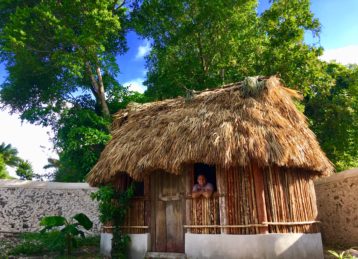
How to build a Mayan house
We thought it would be interesting to show you how Mayan houses are built. Even if you come to the Riviera Maya and do not see an actual Maya house, you probably will see parts of your hotel built in traditional ways. This type of house design has lasted centuries in the southern Mexico area and especially the Yucatan Peninsula. Mayan homes are very efficient and sustainable.
There is some variation to the Maya house. First of all there is usually a stone base and the wood sticks for the walls. Sometimes the walls are made using a plaster of clay and straw. Some Mayan house have stone walls. the roofs can be one of two types of thatch. One type is a grass and the other a palm, which is much more durable.
Our video of building a Maya house
We filmed a construction of a Mayan house from start to finish to show you the process. We hope you enjoy.
Is it a Mayan house or Maya house?
Technically only the term Mayan is used for the language and all other things are Maya. A good example is the Riviera Maya. However it is extremely common to call things Mayan ruins, Mayan community, and Mayan food. Because the term Mayan is so commonly used we intersperse the two. One of the other reasons we use both is because people search certain terms and we want people to find what they are looking for.
Why have the design of these homes lasted so long?
If you visit Chichen Itza you might have seen the model home of what the Maya people lived in. It is almost identical to the style of homes still used today in the Yucatan Peninsula. So why are these homes so popular?
Cost of building a Mayan house
Since all of the materials can be found locally and the houses are relatively easy to build, the cost if very low. Depending on how much labor you put into it yourself, it can cost between one- and two-months’ salary. This is in stark contrast to the cost of many houses in the world where people spend years if not decades paying for them.
Perfect for the climate
The Yucatan Peninsula has year-round warm weather and is often hot. This style of home offers a cool place to live for several reasons. The thatched roof does not absorb the heat like concrete, so that makes it cooler. The cross ventilation also keeps the home cooler. The floors are often concrete and keep fresher since the slabs are on the ground.
The style of life with hammocks also makes living in a warm climate more bearable.
Some interesting details of living in a Maya house
You might wonder about fires, bugs, storage and other things. We will try to answer those questions here.
Kitchens and fires
Most people have two Maya style houses. One is for living and the other is for cooking. This prevents the living space from getting smoky or catching fire. In kitchens you will notice the thatch very black and almost oily. The smoke preserves the roofs more. Cooking is done in low fires surrounded by stones or a concrete wall. Most of the cooking is done on a comal for making tortillas or pots for cooking in. Occasionally there are fires, but the homes can easily be replaced.
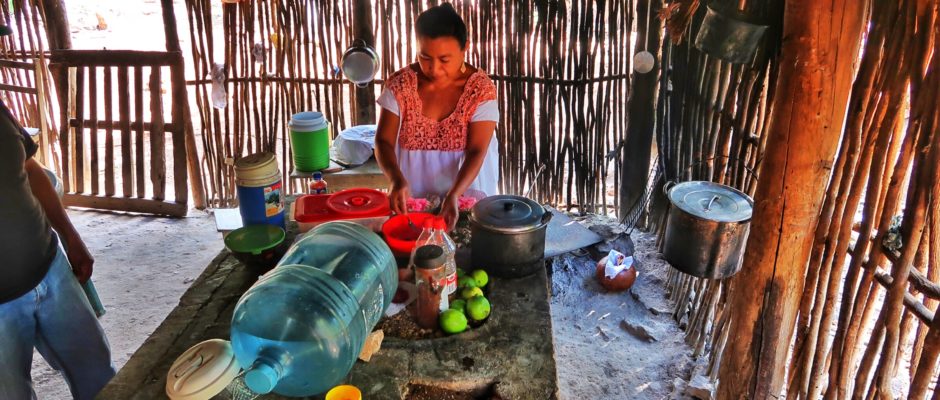
Storage in Maya houses
Having furniture is not common because it is not that efficient in the climate. Often things are hung in plastic bags. This can be done for food items as well. Most Maya don’t have a lot of clothes to store but in these more modern times you will find more storage, refrigerators, TV’s and other conveniences.
Backyards and food
Since storage is limited, often daily food is grown on the premise. Many corner stores are like the community refrigerator. People will stop in for drinks and small items for the day. It is not common to store a lot of food in the home.
Backyards are often full of fruit trees, vegetables, herbs and useful things for the families’ meals. Often you will also find chickens, pigs, ducks, or turkeys in the backyards of Mayan homes.
Step by step instruction to build a Mayan house
Step 1 Choosing location and positioning.
Most Maya houses are about the same size. There are variations depending on how many people are in a family and how big you want the house. The reason most houses are similar in size the size of timber available, and the width is good for one hammock.
Once decided on how wide (and long) the house will be, the timbers are laid out. This helps visualize the house and where to dig the post holes.
Some care is also taken to position the house to catch the normal breeze. Often the front door is lined up with a backdoor or window to create cross ventilation.
Step 2 Getting the house started
Once the position is settled four post holes are dug. Depending on the soil and rock the depth will vary. Much of the Yucatan Peninsula is rocky. If there is deeper spoil a hole of about 2 ft. is made for the corner post. Once the four post are up, cross beams are placed in the notches in the post.
Step 3 Forming the roof
Once the central part of the house is established, two poles are put on the ends. These will temporarily hold the peak beam in place. The next step is adding the vertical beams for the roof.
On the basic square of the house smaller saplings are used to form the curved ends of the Maya house. The houses are oval in shape because the thatched roof is more waterproof when it is laid in a continuous pattern.
Once the sides and curved ends have roof supports the horizontal pieces of wood are added. These are the pieces of wood the thatch material will be hung over. Depending on what material is used, some is hung on the wood supports and other is tied with string. In our video palm was used and did not require anything to attach it.
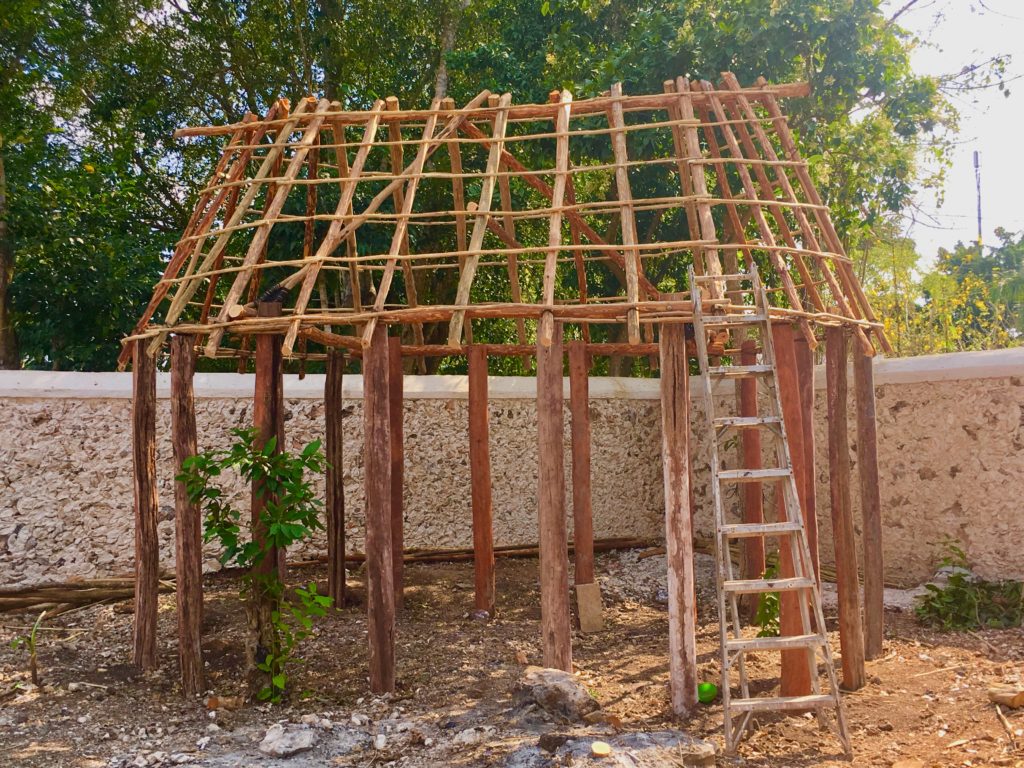
Step 4 The palapa roof
Once all the roof structure is in place the roof thatch can be attached. This style of roof is called palapa.
Material is cut from the fields and woods of surrounding areas. Calculations are made for the right timing of cutting to placement. The material needs to be malleable for installation.
For the palm roof, a rope and hook is used to stack them up and pulled up to the roof. This way the person on the roof can grab the material and work without having to go up and down or have it handed to him.
Once the oval is completed the peak is covered. Longer thatch material is used for the peak. It is folded over and held in place by two sticks. On a funny note, these two poles are often called the path of the mouse since it can be an easy way for a mouse to run across the roof.
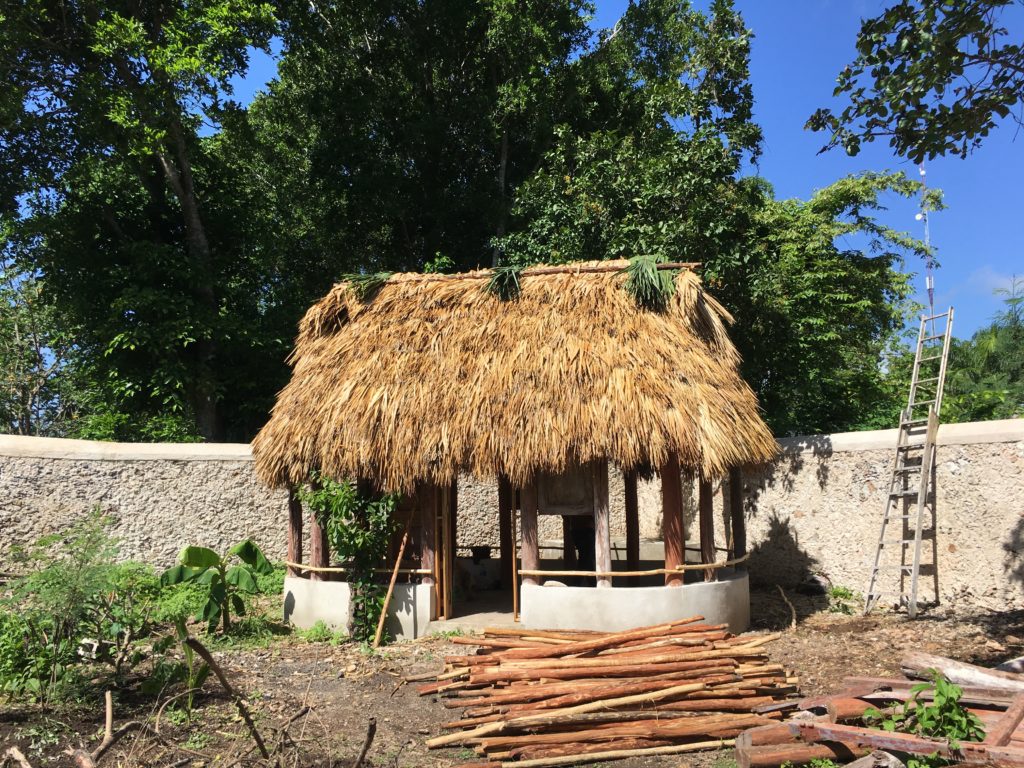
Step 5 Installing a floor and base
Some Mayan homes have just wood walls, other have packed clay over the wood and others have a stone base. In the video we show you a small masonry base wall and concrete floor. This style is popular so the wood pieces for the wall don’t sit on the ground and are not as humid. It also protects against insects and rain.
Most Mayan homes today have concrete floors. Some in very rural and poor areas have dirt floors. There are government programs that help families install concrete floors.
Step 6 Walls and windows
In our video small saplings are used for the walls. If you notice all the wood used in a Maya house has the bark removed. This is because the softest part of the wood is the bark and where the insects like to live. When the bark is removed it means less insects in the house.
For the walls the wood is places vertically and held in place with a small metal wire. Nailing is not used much since the tropical wood tends to be very hard. Spaces for the windows and doors are cut out of the walls.
Some very basic homes have a wood door made of saplings and other have wooden doors like colonial homes, just smaller.
Where can you see Mayan houses?
Well, you can see a few in the Riviera Maya although in most places they have been replaced with more modern block homes. Further west in the Yucatan Peninsula you can see traditional Mayan houses, usually in smaller towns. Towns like Valladolid, Izamal and Espita have many traditional houses that are still used.
One place you can see a lot of Mayan houses is in our gallery here. You might also like to read our article about Mayan food.
Thank you for reading our article about building Maya houses. This is just one of the living cultural things we have in our backyard here. We hope you get out to explore while visiting the Riviera Maya, there is so much to see here!
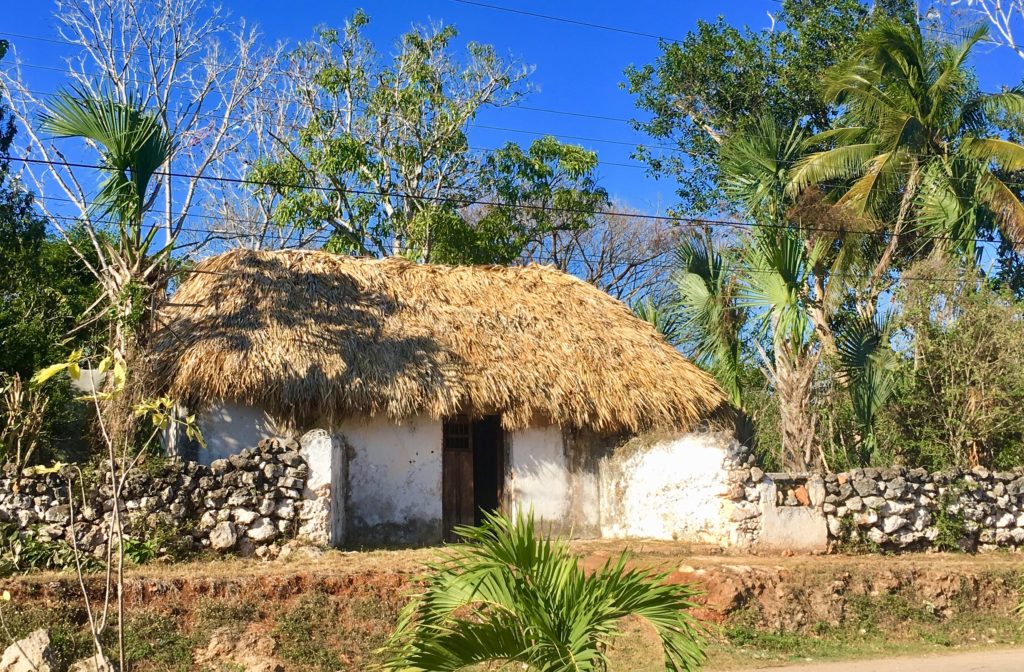


THE PERFECT LIFE SYYLE — JUST THE MINIMUM!